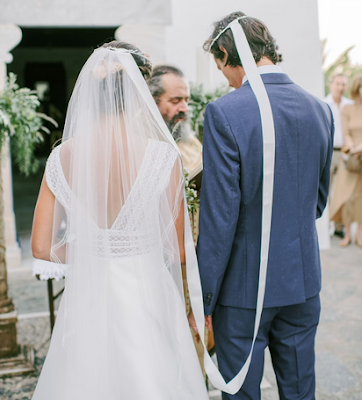In Victorian times, the wedding ceremony look very much like weddings today. Most often, it took place at the bride's parish church decorated with flower. Wedding bells rang out announcing the union, and the newlyweds signed the parish register. Queen Victoria started a new wedding cake tradition when she married Prince Albert of Saxe-Coburg and Gotha in 1840. The cake consisted of three tiers of English plum cake and it was big. While only 14 inches tall, is measured almost 10 feet across, and weighed 300 pounds. At this time the more refined and whiter sugars were still quite expensive. Only wealthy families could afford to decorate with pure white frosting and exhibited the wealth and the social status of the family. When Queen Victoria used white icing on her wedding cake it gained a new title, royal icing.
Aside from all the similarities, in Victorian times they celebrated weddings with three different cakes:
- groom’s cake
- the bride’s cake
- the wedding cake
They also celebrated a tradition known as the cake pull.
Traditional groom’s cake
The groom's cake tradition originated in Victorian England. The earliest groom's cakes were dark, heavy fruitcakes made by the groomsmen and eaten by the groomsmen on the wedding day, with at least a portion saved to be sliced, boxed, and handed out to the single women in attendance. Those women slept with the cake under their pillows to help them dream of their future husbands.
Traditional bride’s cake
The bride’s cake was usually a simple pound cake with white icing which symbolized her virginity. This cake was served to the bridesmaids.
Wedding cake pull
The wedding cake pull originally known as the ribbon pull is a quaint bridesmaids' ritual dating back to the Victorian era. Back then it took place at the wedding reception; today it is usually part of the bridal shower. The bride attached tiny silver charms of fortune to ribbon (similar to the pudding cake charms once hidden in plum pudding at Christmas), and placed them under the wedding cake or between layers. Just before cutting the cake, her single friends were invited to pull one of the ribbons to learn their fortune. Historically, there were charms, each with their own meaning.
Wedding cake pull charms:
- Ring: indicates the next to get married
- Horseshoe or four-leaf clover: good luck
- Telephone: offering good news*
- Anchor: encouraging hope
- Heart: impending love
- Thimble or the button: the old maid
- The penny: poverty
*For those who might wonder about the phone charm in the Victorian era, I thought that I might mention that on January 14, 1878 Queen Victoria made the first publicly-witnessed long-distance phone call in the United Kingdom.
Image credit: Image by Dorothe from Pixabay


.jpg)








